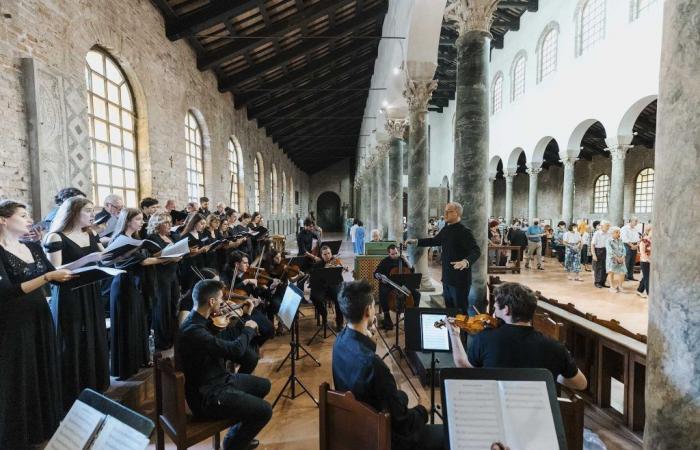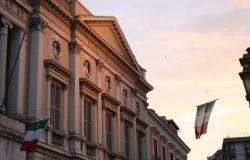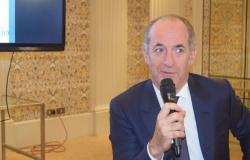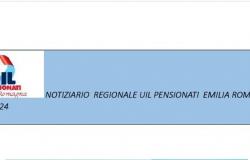Seven paintings to tell the story of an extraordinary woman, in a work for soprano, baritone, choir and ensemble
Daughter, sister, wife and mother of emperors: the adventurous life of Galla Placidia is still extraordinary and current today, and it is precisely along her events that it unfolds. I loved the sacred representation on stage in the space of the Basilica of San Giovanni Evangelista, built by Placidia herself as a vow after the shipwreck on the return from Constantinople. The show will be performed every day, at 7 pm, from Tuesday 2 July to Sunday 7 July.
“History of Galla Placidia in seven paintings” reads the subtitle of the work for soprano, baritone, choir and ensemblewhich Ravenna Festival commissioned from Danilo Comitini (composer) and Francesca Masi (texts and dramaturgy). The performance is entrusted to the soprano Laura Zecchini and the baritone Gianandrea Navacchia directed by Antonio Greco at the head of the Coro & Ensemble 1685 of the Giuseppe Verdi Conservatory of Ravenna, joined by Agnese Contadini on the harp and Raffaele Damen on the accordion.
«I lovedI loved, is the last word pronounced at the point of death by Teodosio, Placidia’s beloved father, and is the starting point of a sacred representation built on real sources but wrapped in an imaginative dimension, in which the protagonist and the voices of her time are embodied in song and music, crossing seven visions, seven imagined dialogues from which – as the composer Danilo Comitini explains – the multiple faces and expressions of the protagonist and her time emerge».
The seven paintings are born from the voices of the choir, like a meditation and take up the last words of Christ on the Cross. In a journey through time, along the life of Placidia, but also in space, touching the cities that welcomed her passage, and through the voices of imaginary interlocutors who in the dialogue allow us to investigate the heart and mind of the protagonist: Ambrose, Jerome, Augustine, Pier Crisologo, John, Hypatia, finally Pope Leo, in front of whom Placidia is reunited with the body of her little dead son, Theodosius, the same name as her father, in a fatal circularity of life and destiny.
“She is a woman who lived on the fertile border between two eras, who leaves the ancient time of classicism to enter the Middle Ages, who passes from the disputes of philosophers to the great councils of nascent Christianity, from the temples of the gods to the church of God; thus placing herself in that fertile passage to which European civilization owes its foundation” concludes Francesca Masi.







